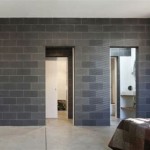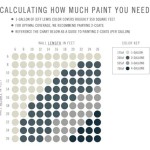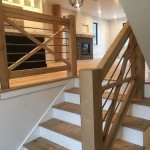How Much Does An Interior Designer Make In New York City Per Hour?
Determining the hourly rate for an interior designer in New York City is a complex process influenced by a multitude of factors. New York City, as a major hub for design and luxury, presents a unique landscape where demand is high but competition is also significant. Understanding the dynamics that influence compensation is crucial for both interior designers seeking employment and clients looking to hire them.
This article will explore the various elements contributing to the hourly rates of interior designers in New York City. These elements include education, experience, specialization, firm size, location within the city, market conditions, and the specific services offered. By examining these components, a clearer picture emerges regarding the potential earnings of interior designers operating in this vibrant and competitive market.
Experience and Education: The Foundation of Hourly Rates
Experience and education form the bedrock upon which an interior designer's hourly rate is built. Entry-level designers, typically those with less than three years of experience, often command lower hourly rates compared to seasoned professionals. A designer just starting out may possess a Bachelor's degree in Interior Design or a related field, which is a standard requirement for many positions.
However, lacking extensive practical experience, their hourly rate will primarily reflect the value of their foundational knowledge and potential. These designers may be working as assistants or junior designers, learning the intricacies of the profession under the guidance of more experienced colleagues. Their rates may range from $30 to $50 per hour, depending on the firm and specific responsibilities.
Mid-level designers, possessing between three and seven years of experience, typically have a more established portfolio and a deeper understanding of the design process. They are capable of managing projects independently, interacting directly with clients, and making critical design decisions. Their hourly rates reflect this increased responsibility and expertise, potentially ranging from $60 to $90 per hour.
Senior designers, with over seven years of experience, represent the pinnacle of expertise in the field. They often possess specialized knowledge in a particular area of design, such as sustainable design, luxury residential design, or commercial space planning. Senior designers are frequently involved in business development, mentoring junior staff, and overseeing complex projects. Consequently, their hourly rates can be significantly higher, often exceeding $100 per hour and potentially reaching $150 or more, depending on their reputation and the demand for their specific skills.
Advanced degrees, certifications (such as LEED accreditation), and specialized training can further enhance a designer's earning potential. Continued professional development demonstrates a commitment to staying current with industry trends and technologies, making designers more valuable to employers and clients alike.
Specialization and Niche Markets: Increasing the Value Proposition
The field of interior design is broad and encompasses a wide range of specializations. Designers who focus on a particular niche market often command higher hourly rates due to their specialized knowledge and expertise. This specialization can be based on project type, style preference, or target client.
For example, designers specializing in high-end residential design catering to affluent clients in Manhattan may charge significantly more per hour compared to those working on smaller-scale projects in less affluent areas. The complexity of these projects, the high expectations of the clients, and the need for impeccable attention to detail all contribute to the higher value placed on their services.
Similarly, designers specializing in commercial design, such as office spaces, retail environments, or hospitality venues, must possess a strong understanding of building codes, accessibility regulations, and the specific needs of the business they are designing for. These designers often work on larger-scale projects with significant budgets, justifying their higher hourly rates.
Furthermore, designers with expertise in sustainable design are increasingly in demand as businesses and individuals alike seek to reduce their environmental impact. These designers understand the principles of green building and can incorporate sustainable materials and practices into their designs, adding value to the project and commanding higher fees.
Other potential specializations include kitchen and bath design, healthcare design, restaurant design, and historic preservation. The more specialized a designer's skills and knowledge, the more they can differentiate themselves from the competition and justify their higher hourly rates.
Firm Size and Location: Understanding the Market Dynamics
The size and location of the interior design firm also play a significant role in determining the hourly rates of its employees. Larger firms, with established reputations and a steady stream of projects, often have the resources to pay their designers higher salaries and hourly rates.
These firms may also offer comprehensive benefits packages, including health insurance, retirement plans, and paid time off, which further contribute to the overall compensation. Working for a larger firm can provide designers with opportunities for professional development, mentorship, and exposure to a wider range of projects.
Smaller firms, on the other hand, may offer a more intimate and collaborative work environment. While their hourly rates may be slightly lower compared to larger firms, they may provide designers with more autonomy and creative control over their projects. Smaller firms may also be more willing to negotiate hourly rates based on individual skills and experience.
The location of the firm within New York City also influences hourly rates. Firms located in high-rent districts, such as Manhattan, typically have higher operating costs and must charge more for their services to remain profitable. This translates to higher hourly rates for their designers.
Firms located in other boroughs, such as Brooklyn or Queens, may have lower operating costs and can afford to charge slightly less for their services. However, even in these boroughs, the demand for interior design services is high, and skilled designers can still command competitive hourly rates.
The overall economic climate and market conditions also affect hourly rates. During periods of economic growth, demand for interior design services tends to increase, driving up hourly rates. Conversely, during economic downturns, demand may decrease, potentially leading to lower hourly rates.
It’s also pertinent to understand the different billing methods employed by interior designers. While this article focuses on hourly rates, some designers also bill using a percentage of the project cost, a fixed fee, or a combination of these methods. Each method has its advantages and disadvantages, and the choice of billing method often depends on the nature and scope of the project.
Ultimately, the hourly rate of an interior designer in New York City is a reflection of their skills, experience, specialization, and the market conditions in which they operate. By understanding the factors that influence compensation, both designers and clients can make informed decisions about hiring and employment.

How Much Does An Interior Designer Cost In 2024 Forbes Home

Average Cost To Hire An Architect In 2024 By Project Hour And More Forbes Home

Interior Designers Occupational Outlook Handbook U S Bureau Of Labor Statistics

20 Highest Paying Jobs In New York

The 25 Rooms That Influence Way We Design New York Times

A Guide To The Cost Of Hiring An Interior Designer Beautiful Homes

For The Sexiest Hourly Rate Hotel In Manhattan New York Times

Best Home Staging Companies In New York City Elika

Interior Design Investment Guide Business Template Startup Designer Bundle Canva

How Chisom Okwulehie Built Lucrative Design Side Hustle
Related Posts








